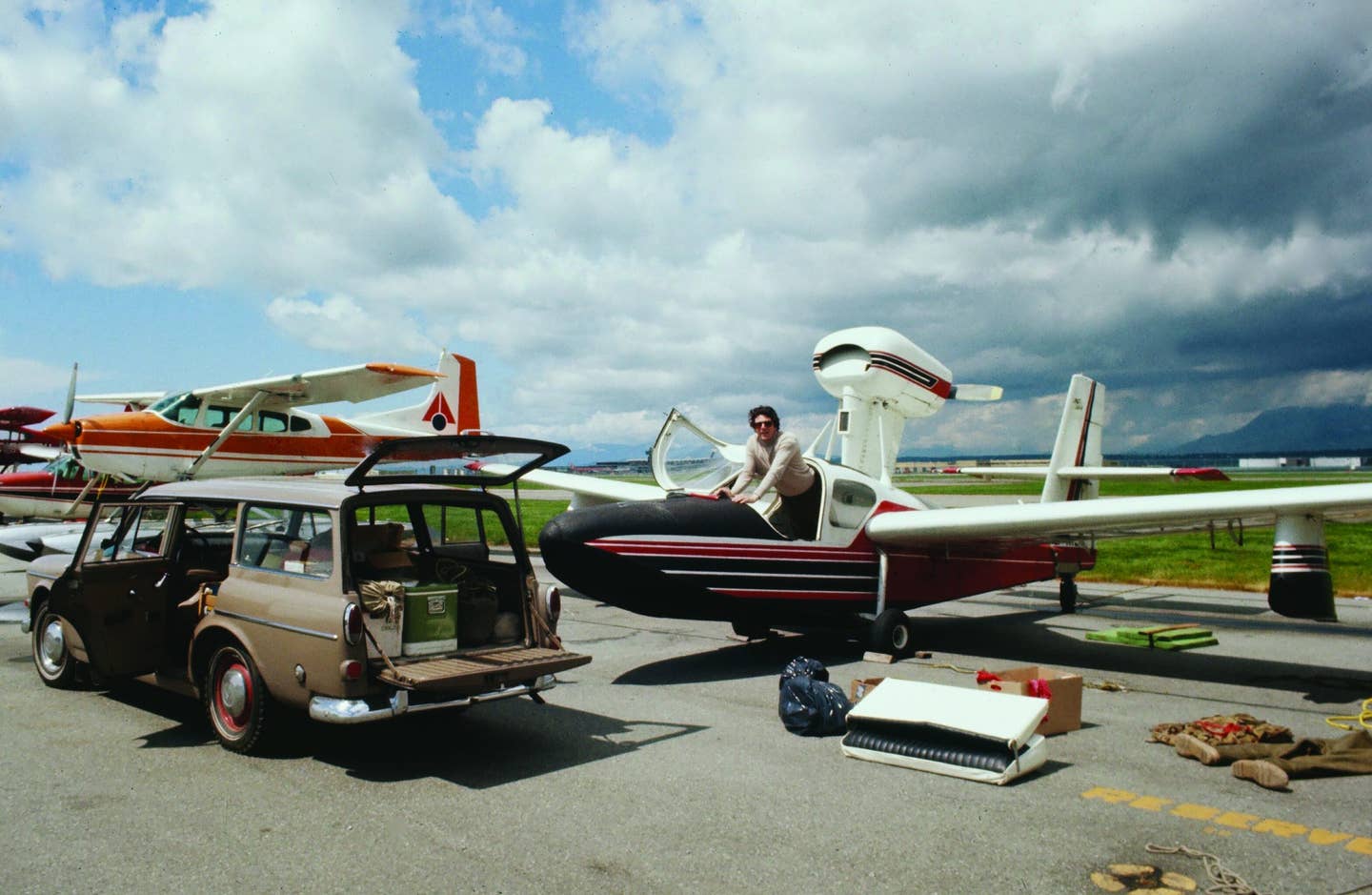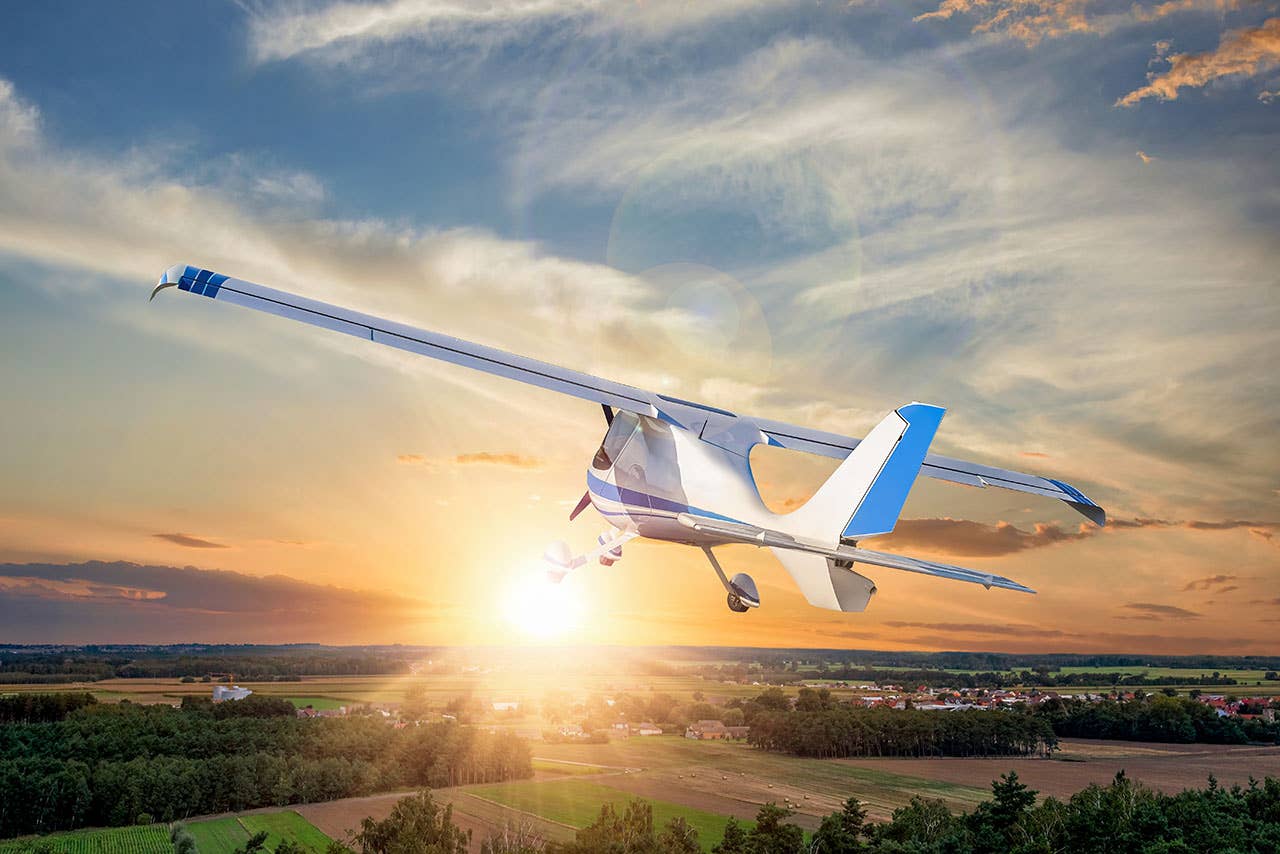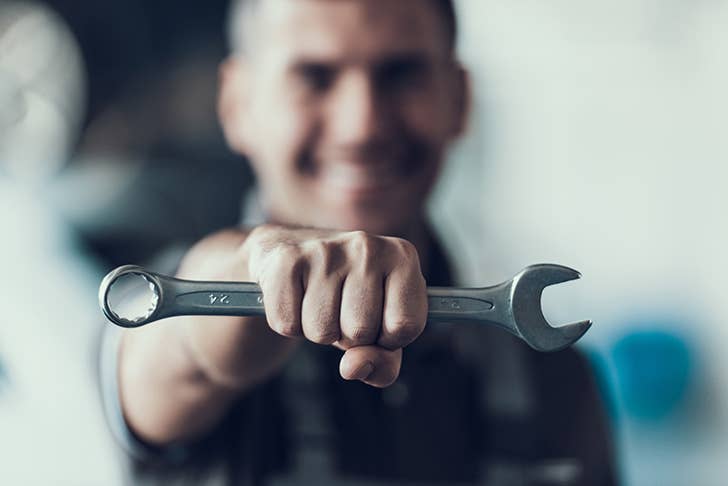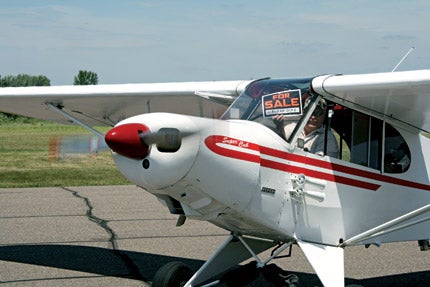 I've always believed that everyone can own an airplane. Indeed, I've noticed that many of the people who are now jetting around in Gulfstreams or Challengers got started in Champs, Cubs, Stinsons, Cessna 150s, Cherokee 140s or similar entry-level airplanes.
I've always believed that everyone can own an airplane. Indeed, I've noticed that many of the people who are now jetting around in Gulfstreams or Challengers got started in Champs, Cubs, Stinsons, Cessna 150s, Cherokee 140s or similar entry-level airplanes.
Beechcraft and Cessna have always recognized that they could build and sell two-place Beech Sports and C-152s, even if at a loss, because the pilots who learned today would return in the future for something bigger and more expensive, hopefully all the way up to a King Air or Citation.
Flying is a great utility for some, a great therapy for others, and both utility and therapy for most pilots. Everyone should have the opportunity to experience owning their own bird. It's always there for you, you don't have to "schedule" it ahead or risk not having it on short notice when suddenly there's a beautiful day and you have the need to fly. You know who's been flying it and how it's maintained, and most importantly, it's yours. Large or small, owning your own airplane is a proud accomplishment and a great feeling.
Plane & Pilot Editor Jeff Berlin is dedicated to the future of aviation like very few people in this industry. I think, recently, he must have come back from lunch at an airport café after overhearing once too often, someone complain about how flying is now "just a rich man's game." All pilots have heard this, and personally, I cringe when I hear it. Sure, if you're talking about a new Gulfstream V at $40 million, you're right, but is that really flying?
Flying, to most of us, is still what you can see at 3,500 feet. It's being aloft just as the sun comes up on a crystal-clear dawn, or crossing farms and small towns at 120 knots. Or making a perfect landing with passengers on board. Or attending a great Saturday fly-in and enjoying the camaraderie of like-minded aviators. Flying is knowing that no matter how bad your day is on the ground, at 3,000 feet everything's fine. That's flying.
Meanwhile, back on terra firma, Jeff came back to the Plane & Pilot offices energized with the determination of a man on a mission. He called me and asked, "Can a beginning pilot, or average guy on a budget, or first-time airplane owner, really still afford an airplane?"
"Yes, I think so," I answered.
"Can an average guy own a decent airplane for $500 per month?"
"I don't know. Maybe. Probably." I rolled the math around in my head quickly. "Yes, I think so," I said confidently.
"Okay, then prove it," he prodded me. I never shirk from a good challenge, or a direct order from the Big Guy. So, in the spirit of a TV-reality-show challenge, I decided to find out: Can a person afford a decent airplane on $500 per month? Here goes!
First, let's look at the costs and see if we can make this work. Certain airplane costs are fixed, which means you spend the money whether you fly or not; other costs are variable, which means they vary according to how much you fly, like gas or maintenance reserves. Let's start with the biggest fixed cost: the purchase price and monthly payment.
Twenty-thousand dollars buys a good airplane. A recent Trade-A-Plane listed 174 airplanes for sale at $20,000 or less. These included Stinsons, Luscombes, AirCoupes, Cessna 120/140s, Tri-Pacers, Pacers, Piper Tomahawks, Cessna 150s, a few really tired Beech Bonanzas, and a few Cessna 172s with high-time engines and other assorted maladies.
Because finances will be tight, let's avoid older, quirky, problematic airplanes. Because of the cost to recover fabric and replace old wood, let's avoid fabric and wood airplanes. There are many types of under-$20,000 airplanes, and even more opinions as to what's the "best" under-$20,000 airplane, but for simplicity of upkeep, age, insurance, ease of flying and maintenance costs, let's set our goal to stay with as new and as simple as possible.
From experience, my picks for this equation are the Piper PA38 Tomahawk and Cessna 150. Both meet all the objectives, and you can easily buy a really good one for $20,000 or less. Note: As finances permit, we can always trade up, or become more adventurous within our budget. Right now, let's concentrate on a positive experience within the prescribed budget and with the fewest maintenance headaches or flying-skill challenges.
Most airplanes today are financed, even the corporate jets. Some simple calculations show that $20,000 will run approximately $145 per month. I began calling all the normal outlets for aircraft financing to get started. I was prepared. I had my last two years' tax returns in hand and a copy of my latest credit report, which showed I was a pretty good guy, and I was prepared to fill out a lot of forms and get the money. Flying, here we come!
First Problem
Most aviation banks have a $25,000 to $50,000 minimum on airplane loans. This is largely due to the clerical expense in setting up the loan, the collection costs and overall risks. It's just hard for a lender in Ohio to keep up with a $20,000 loan in Nebraska. So, how are we going to get to first base if none of the major airplane banks will do our deal?
Here's a hint: The best outlet for a $20,000 airplane loan is Bank of America or Washington Mutual. Right now, they'll give you a second mortgage on your home or condo for $20,000, subject to your reasonably decent credit.
At this writing, Bank of America was quoting approximately 8.74%, or a modest 0.74% over prime. This loan is based on auto-debit of your Bank of America account (saves billing and collection expense). While it's a second mortgage on your home, they don't care if you spend it on an airplane. The paperwork isn't too bad for a $20,000 second mortgage, and most any branch with a home mortgage department should be able to handle it.
Relief. Now We've Got The Money. What's Next?
The next step is insurance. Flying without insurance isn't smart. You're risking your entire investment, plus your net worth, on trying to save a very little amount of money. According to Dave Monaco at Southwest Aviation Insurance in Scottsdale, Ariz., full coverage on a modern $20,000 airplane, for a pilot with no accidents or violations, will run approximately $70 per month.
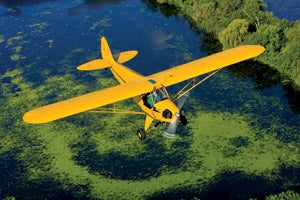 If the budget is tight, it's not the time to be risky. Things happen. By buying insurance, you're assuring yourself that, in most cases, if something does go awry, you won't be out of the flying game. There will be money to fix the bird or replace it.
If the budget is tight, it's not the time to be risky. Things happen. By buying insurance, you're assuring yourself that, in most cases, if something does go awry, you won't be out of the flying game. There will be money to fix the bird or replace it.
It's coming together. So far, we've spent $215 per month. What about maintenance? Could this blow our budget?
Every airplane must have an FAA-mandated annual inspection once a year. This is the law, as well as good common sense. Annual inspections can be the trickiest part of our budget since you can't totally predict what will break on an airplane. Since it's safety-related, we won't cut corners in this area, but we can be as wise and practical as possible.
Common logic tells us to find a capable mechanic who knows our type of airplane and is, perhaps, off the beaten path and away from big-city overhead costs. Big-time shops that work on pricey jets and turboprops should be avoided for our $20,000 airplane if we're to stay within budget. Many mechanics located away from the stress of high-overhead areas will offer, or allow, an "owner-assisted" annual inspection. This is where the owner can do the mundane things, like opening inspection plates, taking the cowling off and generally "prepping" the airplane for the mechanic to have a look.
Most really good mechanics are busy and understaffed, and might welcome this assistance, provided you stay out of their way and don't become a pest. In this case, you're literally the helper, not the client, and your job is to make his life easier, not more burdensome. Do exactly what he says, don't distract him with a lot of small talk or general questions, and the arrangement should work out fine.
A reasonable annual, on a typical all-metal airplane in our category, with no serious problems, will be around $1,200, or for budget purposes, $100 per month. Owner-assisted annuals generally run about $600 plus any unusual or extraordinary items.
Additionally, many owners enjoy the hands-on "bonding" experience of working with their airplanes. If you're a hard worker and enjoy being around airplanes, you might even find an opportunity to work part-time for a busy mechanic and generate some additional income to totally swap out or at least partially reduce your own maintenance expenses.
How are we doing? Is airplane ownership for $500 monthly a reality? The tally so far: $315 per month. We now own an airplane, we're prudently insuring our investment and we have estimated the annual required maintenance expense. What's next?
Storage: Where Are We Keeping It?
Hangar and tiedown expenses can hugely vary. If we're on a budget, it's not going to work to keep our airplane at a fancy big-name FBO with complimentary limo service and freshly baked cookies. Besides, who wants to breathe in all those jet fumes as you await the active runway behind an endless line of corporate jets?
Rural airports are more fun and a lot cheaper. At smaller airports, there's typically a friendly spirit of cooperation and camaraderie among all the flyers. You can probably even find a water spigot and hose where you can wash your own airplane on Saturdays, or do some minor "tinkering." The costs for tiedowns at the smaller, fun, good-spirited airports are about $50 per month. Hangars are generally a fraction of the cost of a big-city airport. Because we're on a budget, one of the advantages of an all-metal airplane is that it can be kept outdoors. It's not ideal, and a hangar is preferred, but sunshades will help protect the glass and upholstery from the UV rays. Check out some of the outlying fields in your area to see which seems the most fun and best-suited.
We're now at $365 per month. This is looking better and better. Have we forgotten anything? Yes.
Contingencies, Taxes & Miscellaneous
As careful as we are, things break between annuals. It's often cheaper to fix things as they come up, rather than to let them go and become bigger, more expensive problems. Tires go flat, cylinders lose compression, oil leaks pop up out of nowhere, and transponders and altimeters go on the fritz. If we're really trying to do this right, with the most budgetary honesty and fewest fiscal surprises, we should budget about another $100 per month for "contingencies." Put this money aside, literally, in your cookie jar or flight bag. That way, when something does break, hopefully you've got the green tucked away to pay for the repair so you can keep flying without worry or interruption.
Please note, as a matter of practicality, these numbers represent reasonably good estimates of actual airplane ownership costs, but they're not meant to be all-inclusive or the last word on the subject. I also recommend that you become familiar with the various vendors for new and used parts, so that you can shop around as a wise consumer. Prices can vary considerably, from the big-name shops and suppliers to the salvage houses and mail-order vendors out of Trade-A-Plane or Plane & Pilot. Never sacrifice quality for price when it comes to aviation, just be an educated consumer.
Another possibility is swapping out some of your services and talents for tiedown, maintenance or even a fuel discount with your FBO. One of my clients is a well-respected attorney who handles all of his mechanic's minor legal problems in exchange for free annual inspections and tiedown on his Mooney. Another client of mine is a CPA who volunteers basic accounting work to swap out for a discounted avgas price for his 172. Another client owns a great hamburger joint and his airplane guy never picks up a restaurant tab. Be creative and generous with your talents and see if it can truly help your FBO or mechanic, and everybody wins.
We haven't addressed the cost of gasoline or engine reserves. These are the largest variable expenses because, technically, you incur these costs only when you fly, so they're somewhat more easily budgeted or controlled. Gas expense is obvious. Engine reserves mean that you should sock away so much per hour, for every hour you fly, toward your engine overhaul, so that when your engine reaches TBO, the money is available for a new engine. It's not mandatory or required, just helpful budgeting. Avgas is a huge variable expense that depends on location, time of the year and your schedule. If you're super-busy, you're not flying and not buying gas. If it's too cold, too hot, too rainy or IFR, you're not flying and spending money. There are so many variables to this element that we have left it for another discussion.
How are we doing? Pretty good I'd say. The calculator shows $465 per month for payment, insurance, maintenance and contingencies. We wisely have $35 per month for "other" items or a further reserve.
We Did It
We've proven the chair warmers at the coffee shop wrong. The great dream of flying and owning your own airplane is within reach for the average guy. Use this article as a guide and come up with new and creative ideas of your own.
The Next Step?
Get a copy of Trade-A-Plane or The Controller, and start calling on ads for airplanes that sound good in your area and can be easily inspected. Don't rush, but do be prepared to buy without undue hesitation when the right one comes up. Get your Bank of America second mortgage set up, call ahead for insurance, then go and inspect your potential airplane. Hire a well-respected mechanic to help you evaluate it, and don't expect to purchase a brand-new airplane. A $20,000 airplane may indeed have its faults, but they should be limited to mostly normal wear and tear and cosmetic items. Remember, for our budget to work, we need to start with an airplane with the fewest major glitches and no major engine or airframe work coming up soon. If you can make friends with an owner who already has the model you're looking for, he or she may give you some good insight on what problems are critical and which ones are minor.
We did it for actually a tad under $500 per month. I truly believe that owning an airplane can be one of the happiest experiences you can have, and that it is within the reach of everybody. The average guy or gal can own an airplane.
| $500-Per-Month Airplane "Gotchas" |
|
By picking a simple and modern airplane, a lot of maintenance issues can be automatically avoided, but there are still "issues" that can throw your budget out of whack. A good, thorough prepurchase inspection should catch the largest potential expenses, but things do break from time to time, hence the need for the contingency funds. For $20,000, you should expect a pretty decent, ready-to-go airplane with a low-time engine, good log books, no serious corrosion issues and moderate airframe time. Note: Almost all Cessna 150s and Piper Tomahawks have been trainers at one time or another, and may have damage histories related to student use. Make sure that your mechanic reviews the FAA Form 337s (which describe the repairs), check the NTSB Website (www.ntsb.gov) for narratives of the accident and then carefully inspect the repairs for proper workmanship. A repair from damage done 10 or more years ago will have little impact on the airplane, provided it has been properly repaired, it has been inspected by your guy and the test flight reveals no abnormal flight characteristics. If you're a new pilot, have a high-time, seasoned flight instructor fly the airplane to verify proper rigging and handling responses. Also, before purchase, have a competent mechanic check for firewall damage, cracked or low compression cylinders, oil leaks, corrosion, hidden damage, proper rigging, correct prop blade dimensions, etc. It's perfectly okay to "flunk" an airplane on a prepurchase inspection. There are some pretty creepy examples of every type of aircraft out there that sellers have a hard time getting rid of. It's better to say "no" to a problematic airplane now than to get stuck with a money pit. On the other hand, don't expect perfection with a 30-year-old airplane, just a solid ride with normal wear and tear and minor scrapes and bruises. As you fly, remember that the radio, the transponder, the altimeter, vacuum pumps and other accessories can go out. Don't be flabbergasted if fate deals you an expensive maintenance bill, just have a plan on how you can prudently handle it and keep flying. Good contingency budgeting means you're never going to be flat-footed when something breaks. It's not a matter of "if," but "when" something will break, so don't fret about it. Even $40,000,000 Gulfstreams break occasionally. |

Subscribe to Our Newsletter
Get the latest Plane & Pilot Magazine stories delivered directly to your inbox


